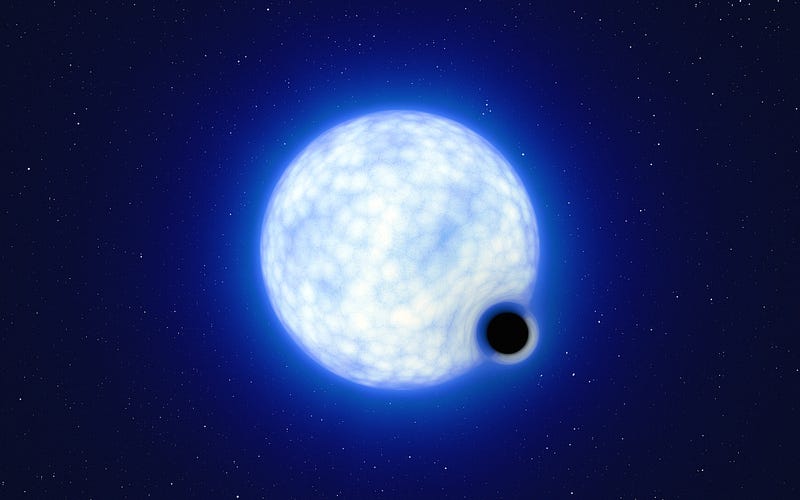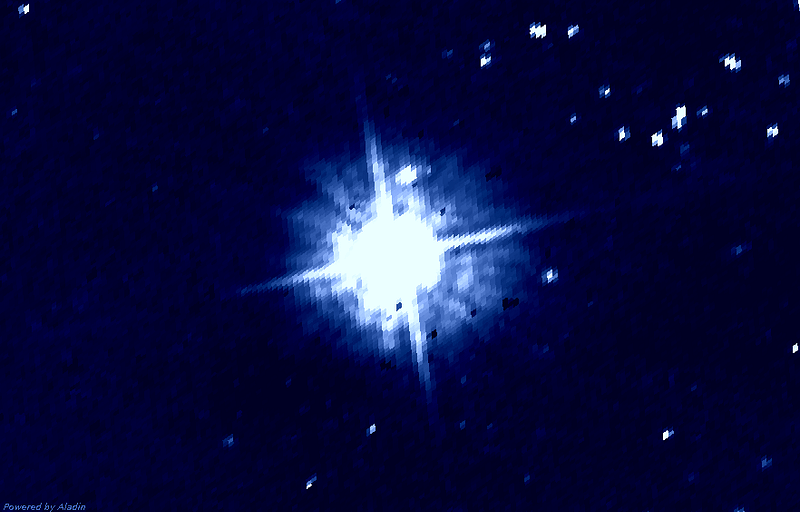A New Era in Understanding Invisible Black Holes
Written on
Chapter 1: The Discovery of an Invisible Black Hole
Recent studies have unveiled an elusive black hole nestled within the Tarantula Nebula. This binary star system in a neighboring galaxy features a young, massive star, approximately 25 times the mass of our Sun, paired with an unseen companion that boasts at least 9 solar masses. The question remains: what exactly is this companion?

The Origin of Stellar Black Holes
Stellar black holes typically emerge from the remnants of supernova explosions, where massive stars conclude their life cycle with a dramatic detonation. However, is it possible for some stars to perish quietly, collapsing without a noticeable expulsion of matter? The analysis of the binary system VFTS 243 from the Large Magellanic Cloud offers insights into this essential question regarding stellar evolution.

The Enigmatic Binary System
VFTS 243 resides in the Tarantula Nebula, a prominent feature in the southern sky. Observations from the European Very Large Telescope (VLT) have confirmed that this binary system consists of a massive star with a mass of 25 Suns and an invisible companion, likely a stellar black hole weighing at least 9 Suns. Astronomers have concluded that the only plausible explanation for this companion is the presence of a relatively massive black hole.
Analyzing this system has proven challenging due to the significant distance between the two stars and the black hole's inability to siphon off material from its companion. Typically, such consumption would produce strong X-ray emissions, but this black hole remains "ascetic." The significance of this finding lies in the absence of mass transfer in the system, which usually leads to tighter, more circular orbits.
Consequently, it can be inferred that the current orbits of both stars are similar to those present just after the formation of the black hole. The nature of their orbits suggests that the star from which the black hole originated underwent a quiet explosion—one that did not result in a substantial mass ejection or the typical recoil associated with asymmetric explosions.

Silent Supernovae: A New Understanding
The existence of silent supernovae is now confirmed, indicating they may be more prevalent than previously thought. Researchers suggest that the limited number of known ordinary X-ray binary systems containing a black hole paired with a massive visible star may merely represent the surface of a much larger phenomenon. Hundreds of these quiescent counterparts to X-ray-visible systems are theorized to exist within our Milky Way and the Magellanic Clouds, yet we remain largely unaware of these intriguing systems.
Chapter 2: Exploring the Invisible Universe
The first video delves into the recent discovery of a dormant black hole with unusual origins found in the Large Magellanic Cloud. It provides further insights into this fascinating find.
The second video highlights the innovative methods Berkeley scientists have developed to "see" invisible black holes, shedding light on these hidden cosmic entities.
In conclusion, the exploration of invisible black holes is only beginning, and every discovery brings us closer to unraveling the mysteries of the universe.
Thank you for reading! If you found this article helpful, please consider leaving a clap or following for more updates. Your support is greatly appreciated!